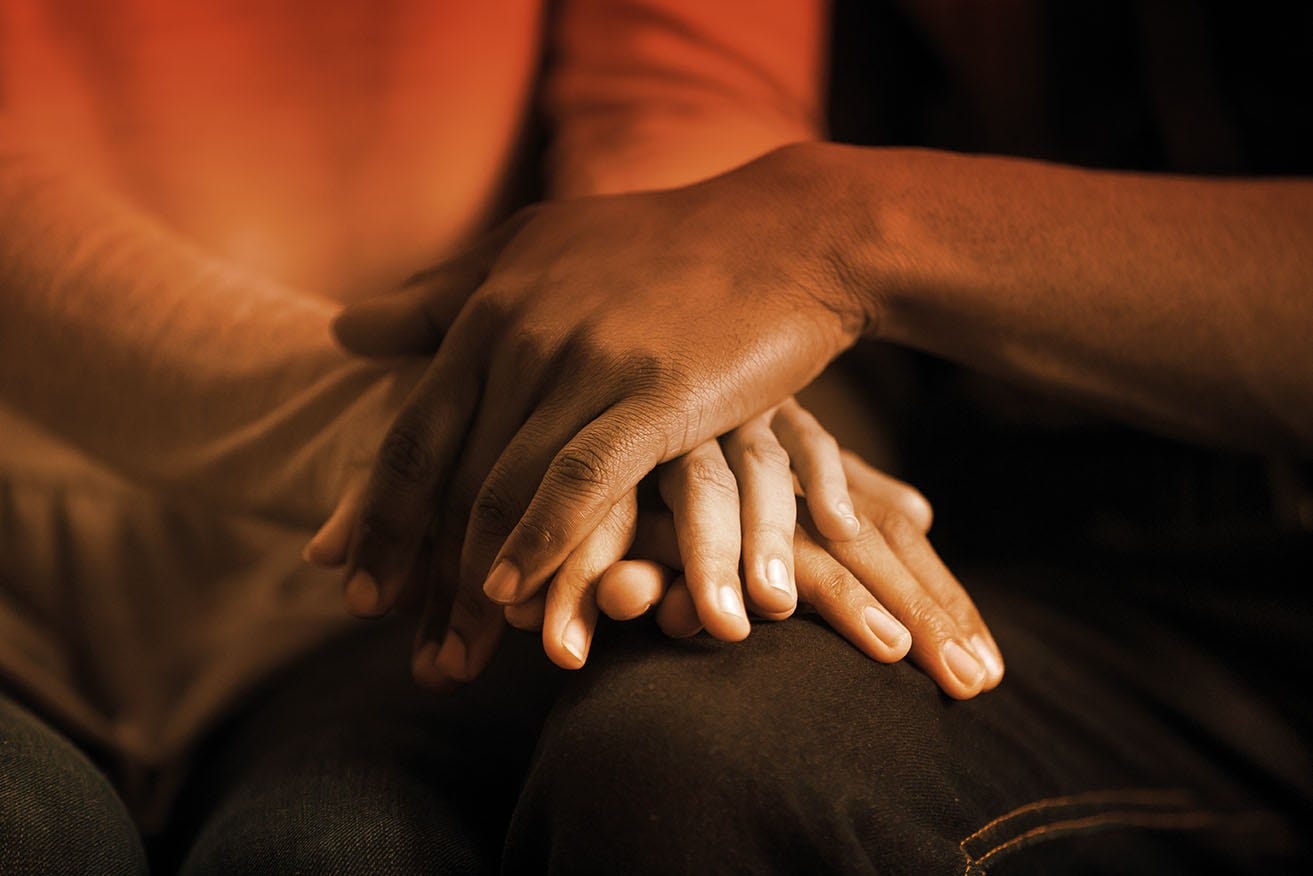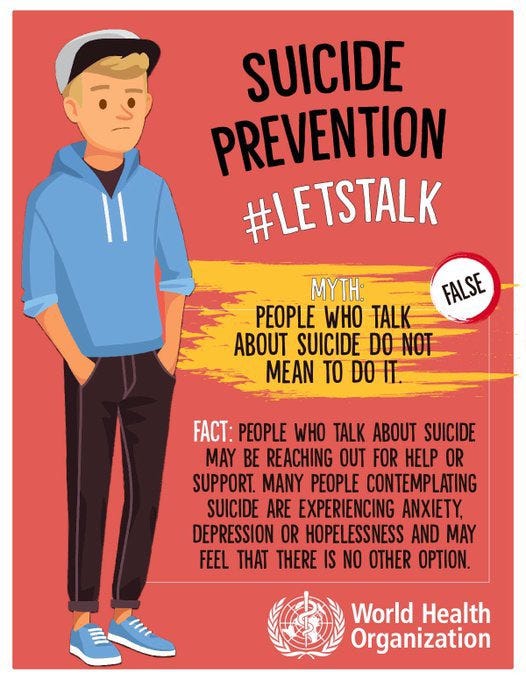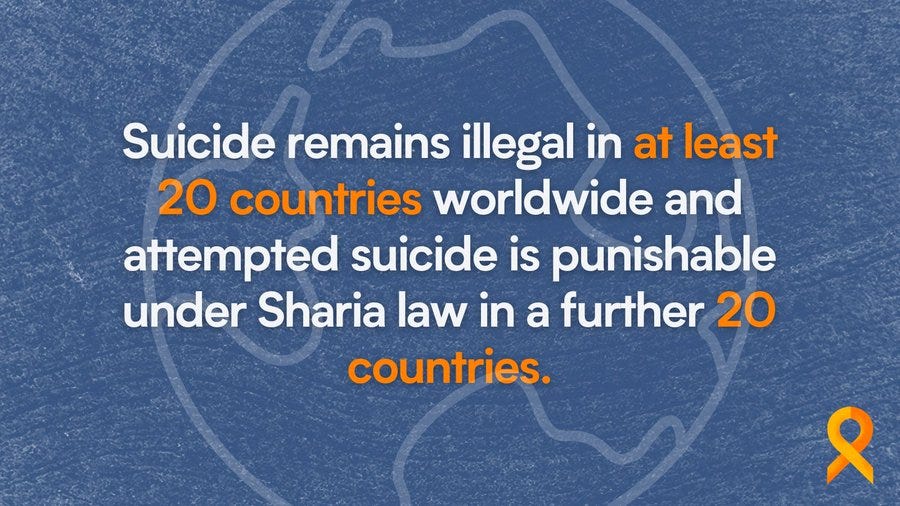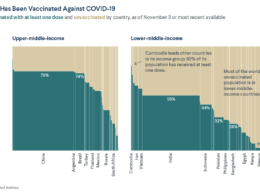Leading suicide prevention organizations highlighted the need to decriminalize suicide and invest in suicide prevention strategies, as suicide causes one in every 100 deaths globally.
Health Policy Watch
Madeleine Hoecklin
10/09/2021
Credito to the image: vox/getty
Key points (Summarized by the Editor of the Blog)
What is the problem?
- Suicide is among the leading causes of death worldwide.
- Globally, 703,000 people die by suicide every year — accounting for one in every 100 deaths. Suicide causes more deaths than malaria, HIV/AIDS, breast cancer, or war and homicide.
What are some of the causes?
- The COVID-19 pandemic has exacerbated the risk factors associated with suicidal behaviors and highlighted the grave need for national prevention plans
- But suicide also is currently a criminal offence in 20 countries and those who have attempted suicide can be arrested, prosecuted, and punished with fines and one to three years in prison
What are the recommendations?
- The leading international organization for suicide prevention has called for the decriminalization of suicide
- as well as greater investment by countries in suicide prevention, including greater restrictions on access to common suicide tools such as toxic pesticides and firearms.
- This, combined with investments in mental health services and measures that restrict access to suicide “weapons,” can enable people to receive emergency lifesaving treatment — and facilitate the longer-term diagnosis and treatment of mental health conditions
What is the WHO´s approach?
WHO’s LIVE LIFE approach to suicide prevention includes four strategies:
- Regulations restricting access to means of suicide — including firearms as well as deadly pesticides that are often used for self harm in the developing world;
- Early identification, assessment, management, and follow-up of people affected by suicidal thoughts and behaviors;
- Fostering adolescent social-emotional skills;
- Educating the media on responsible reporting on suicide.
What is the opportunity?
- According to suicide prevention activists, there is a historic opportunity to push for reforms in light of the commitments to achieving the Sustainable Development Goals — one of which is the reduction of suicide — and the WHO Mental Health Action Plan 2020–2030.
- Currently only 38 countries have a national strategy for suicide prevention.

The leading international organization for suicide prevention has called for the decriminalization of suicide — as well as greater investment by countries in suicide prevention, including greater restrictions on access to common suicide tools such as toxic pesticides and firearms.
The appeals, by the International Association for Suicide Prevention (IASP) and endorsed by the World Health Organization (WHO), come on World Suicide Prevention Day, observed every year on 10 September.
- Suicide is among the leading causes of death worldwide.
- The COVID-19 pandemic has exacerbated the risk factors associated with suicidal behaviors and highlighted the grave need for national prevention plans, said Dr Rory O’Connor, President of IASP, in a statement.
“Raising awareness of suicide can help to strengthen our understanding and reduce the stigma surrounding suicide,” he noted. “This in turn helps to break down the many barriers to people seeking help… [and] can also help create a more accepting society.”

Globally, 703,000 people die by suicide every year — accounting for one in every 100 deaths. Suicide causes more deaths than malaria, HIV/AIDS, breast cancer, or war and homicide.
Among young people aged 15 to 29, suicide was the fourth leading cause of death in 2019.
Decriminalization can open up access to services
But suicide also is currently a criminal offence in 20 countries and those who have attempted suicide can be arrested, prosecuted, and punished with fines and one to three years in prison, found a new report published by IASP and United for Global Mental Health on 8 September.
“Criminalizing suicide is counterproductive,” said IASP. “It does not deter people from taking their lives, but it does deter them from seeking help in a moment of crisis. Suicide must be decriminalized.”

Decriminalization plays a pivotal role in amplifying access to suicide prevention services — removing stigma associated with people with suicidal thoughts or behaviours.
This, combined with investments in mental health services and measures that restrict access to suicide “weapons,” can enable people to receive emergency lifesaving treatment — and facilitate the longer-term diagnosis and treatment of mental health conditions.
“We cannot — and must not — ignore suicide,” said Dr Tedros Adhanom Ghebreyesus, Director-General of WHO, in a statement in June. “Each one is a tragedy.
Our attention to suicide prevention is even more important now, after many months living with the COVID-19 pandemic, with many of the risk factors for suicide — job loss, financial stress and social isolation — still very much present.”
Banning pesticides, training healthcare workers, and decriminalizing suicide
WHO’s LIVE LIFE approach to suicide prevention includes four strategies:
- Regulations restricting access to means of suicide — including firearms as well as deadly pesticides that are often used for self harm in the developing world;
- Early identification, assessment, management, and follow-up of people affected by suicidal thoughts and behaviors;
- Fostering adolescent social-emotional skills;
- Educating the media on responsible reporting on suicide.

“Suicide is an urgent public health problem and its prevention must be a national priority,” said Renato Oliveira e Souza, head of the Mental Health Unit at the Pan American Health Organization, in a press release.
“We need concrete action from all elements of society to put an end to these deaths, and for governments to create and invest in a comprehensive national strategy to improve suicide prevention and care.”
Currently only 38 countries have a national strategy for suicide prevention.
According to suicide prevention activists, there is a historic opportunity to push for reforms in light of the commitments to achieving the Sustainable Development Goals — one of which is the reduction of suicide — and the WHO Mental Health Action Plan 2020–2030.
- In low- and middle-income countries, countries have been called to ban or severely restrict access to acutely toxic and highly hazardous pesticides, which are often widely available on the market, and cause 20% of all suicides worldwide.
- Globally, restricting access to firearms, reducing the size of medication packages, and install barriers at jump sites after other critical measures.
Training for healthcare professionals in early identification, assessment, management, and follow-up is necessary to support those at risk of suicide.
Originally published at https://healthpolicy-watch.news.
Names cited:
Dr Rory O’Connor, President of IASP — International Association for Suicide Prevention;
Renato Oliveira e Souza, head of the Mental Health Unit at the Pan American Health Organization;












